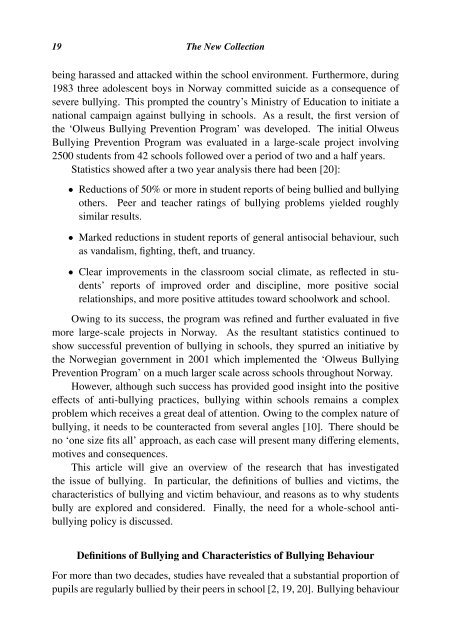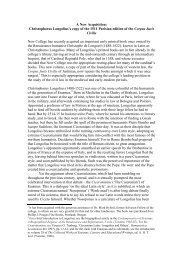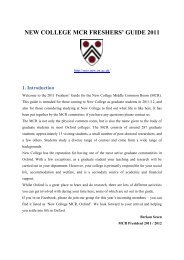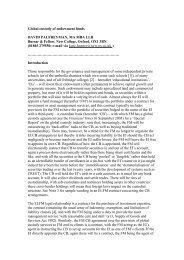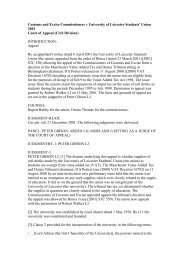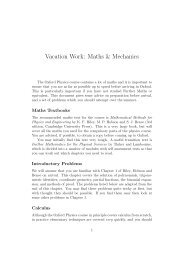Here - New College MCR - University of Oxford
Here - New College MCR - University of Oxford
Here - New College MCR - University of Oxford
Create successful ePaper yourself
Turn your PDF publications into a flip-book with our unique Google optimized e-Paper software.
19 The <strong>New</strong> Collection<br />
being harassed and attacked within the school environment. Furthermore, during<br />
1983 three adolescent boys in Norway committed suicide as a consequence <strong>of</strong><br />
severe bullying. This prompted the country’s Ministry <strong>of</strong> Education to initiate a<br />
national campaign against bullying in schools. As a result, the first version <strong>of</strong><br />
the ‘Olweus Bullying Prevention Program’ was developed. The initial Olweus<br />
Bullying Prevention Program was evaluated in a large-scale project involving<br />
2500 students from 42 schools followed over a period <strong>of</strong> two and a half years.<br />
Statistics showed after a two year analysis there had been [20]:<br />
• Reductions <strong>of</strong> 50% or more in student reports <strong>of</strong> being bullied and bullying<br />
others. Peer and teacher ratings <strong>of</strong> bullying problems yielded roughly<br />
similar results.<br />
• Marked reductions in student reports <strong>of</strong> general antisocial behaviour, such<br />
as vandalism, fighting, theft, and truancy.<br />
• Clear improvements in the classroom social climate, as reflected in students’<br />
reports <strong>of</strong> improved order and discipline, more positive social<br />
relationships, and more positive attitudes toward schoolwork and school.<br />
Owing to its success, the program was refined and further evaluated in five<br />
more large-scale projects in Norway. As the resultant statistics continued to<br />
show successful prevention <strong>of</strong> bullying in schools, they spurred an initiative by<br />
the Norwegian government in 2001 which implemented the ‘Olweus Bullying<br />
Prevention Program’ on a much larger scale across schools throughout Norway.<br />
However, although such success has provided good insight into the positive<br />
effects <strong>of</strong> anti-bullying practices, bullying within schools remains a complex<br />
problem which receives a great deal <strong>of</strong> attention. Owing to the complex nature <strong>of</strong><br />
bullying, it needs to be counteracted from several angles [10]. There should be<br />
no ‘one size fits all’ approach, as each case will present many differing elements,<br />
motives and consequences.<br />
This article will give an overview <strong>of</strong> the research that has investigated<br />
the issue <strong>of</strong> bullying. In particular, the definitions <strong>of</strong> bullies and victims, the<br />
characteristics <strong>of</strong> bullying and victim behaviour, and reasons as to why students<br />
bully are explored and considered. Finally, the need for a whole-school antibullying<br />
policy is discussed.<br />
Definitions <strong>of</strong> Bullying and Characteristics <strong>of</strong> Bullying Behaviour<br />
For more than two decades, studies have revealed that a substantial proportion <strong>of</strong><br />
pupils are regularly bullied by their peers in school [2, 19, 20]. Bullying behaviour


